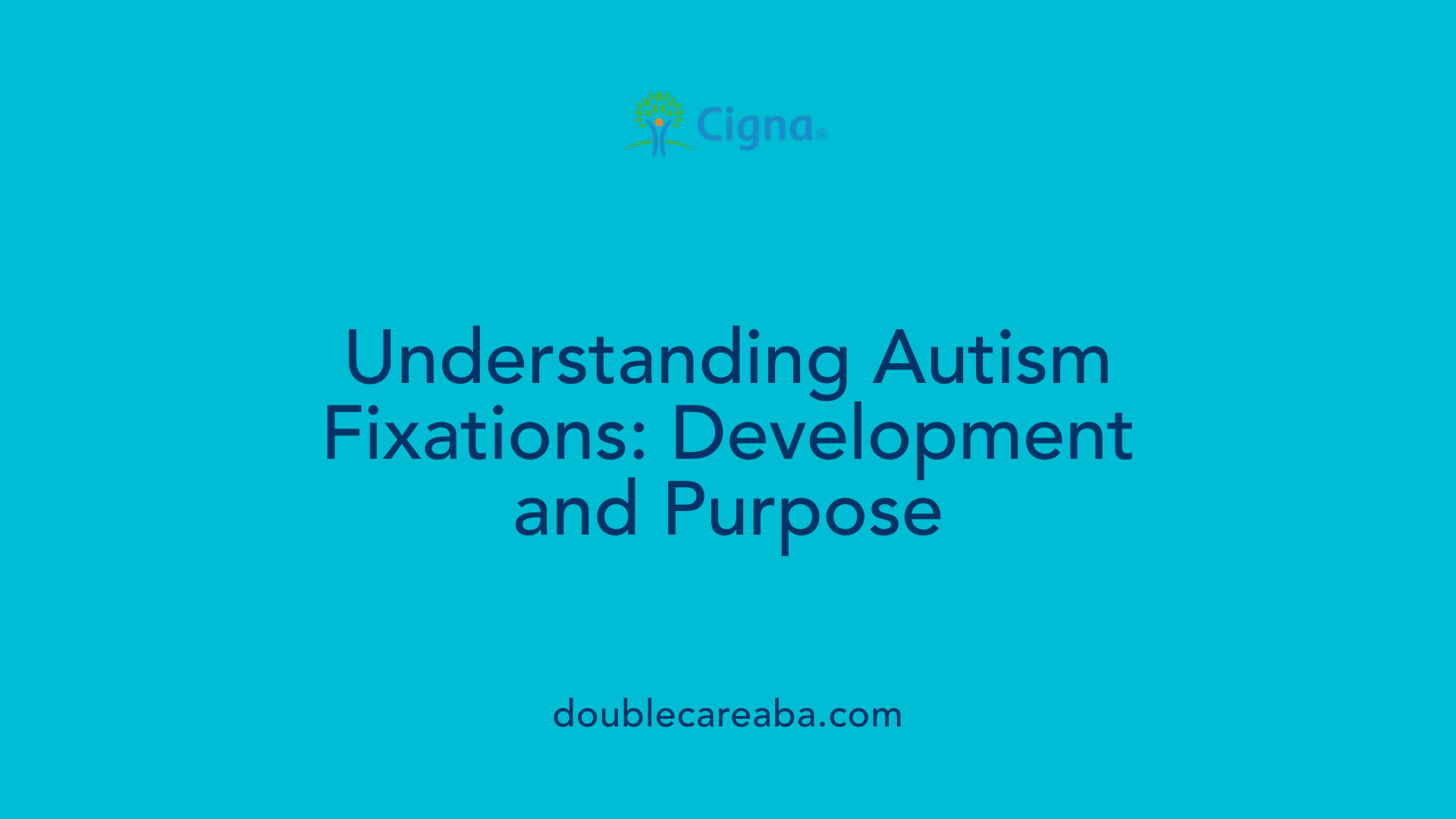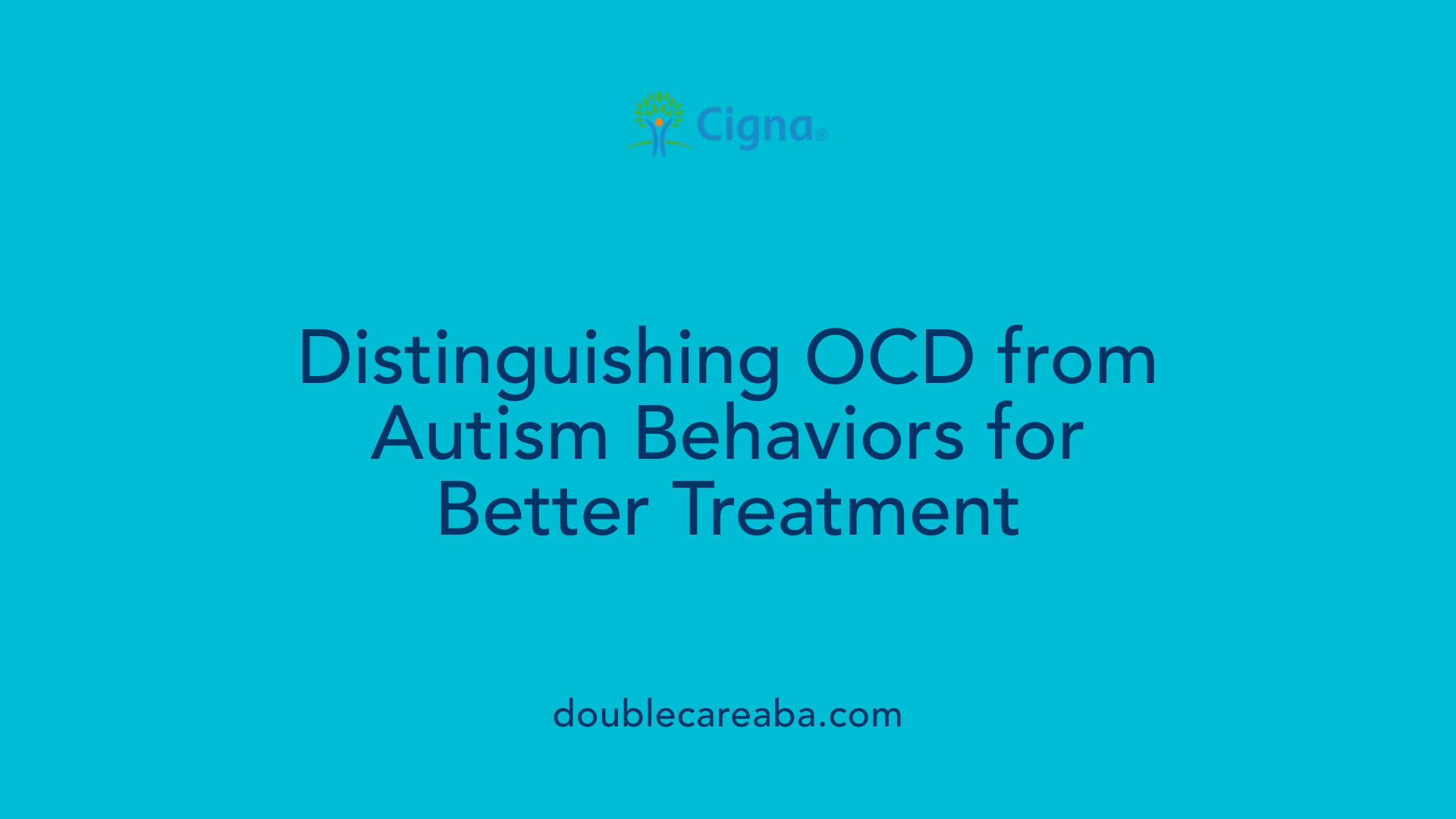Understanding the Nature of Repetitive Behaviors in Autism
Autism spectrum disorder (ASD) encompasses a wide array of behaviors, among which obsessions and fixations stand out as core features. These behaviors, often misunderstood, can serve as coping mechanisms, sources of pleasure, or developmental strengths. Exploring their characteristics, development, and distinctions from clinical obsessions in OCD provides a clearer picture of their role in the autistic experience.
Characteristics and Examples of Autistic Obsessions

What are common characteristics and examples of obsessions in autistic individuals?
Autistic individuals often display behaviors known as fixations or intense interests, which are characterized by a high level of focus and persistence. These fixations are usually rigid, meaning they prefer consistency and can resist change or interruptions.
These obsessions can involve a deep dive into specific topics, objects, or routines. They often take the form of repetitive behaviors related to hobbies or interests, such as collecting items, arranging objects, or engaging in specific activities repeatedly. Such behaviors serve to provide comfort, stability, and predictability, helping individuals regulate their emotions and reduce anxiety.
One hallmark of autistic fixations is their ability to dominate thoughts and daily routines. For example, a person might spend hours learning about trains or memorizing facts about a certain animal, or they may restrict their daily activities to preferred routines that include specific orders of actions.
These interests are not just casual hobbies but often deeply ingrained parts of their life, influencing social interactions and self-identity. Unlike Obsessive-Compulsive Disorder (OCD) obsessions, these fixations generally do not cause distress. Instead, they often bring joy and self-satisfaction.
Common interests include:
- Transportation, such as trains, planes, or automobiles
- Animals like dogs, cats, or exotic wildlife
- Art, music, or specific genres of movies and TV shows
- Numbers, patterns, or systems like calendars or coding
- Specific objects such as toys, collectibles, or electronics
- Routines and rituals, like specific ways of completing tasks or organizing spaces
By focusing intensely on these interests, autistic individuals can develop substantial skills and knowledge, which can be beneficial academically, vocationally, or socially. For instance, a fascination with electronics could lead to a career in technology, while a love of animals could foster a career in veterinary sciences.
In summary, obsessions in autism are characterized by their strength, focus, and longevity. These fixations can be an essential part of their daily life, offering comfort and self-regulation, and can even serve as bridges to social and professional opportunities when nurtured appropriately.
Stereotypical Interests and Fixations in Autism

Are there specific types of interests or fixations that are considered stereotypical in autism?
Yes, there are particular interests and fixations in autism that are recognized as stereotypical. These often involve highly focused, repetitive behaviors and intense interests that go beyond typical hobbies. Common stereotypical interests include collecting objects such as buttons, rocks, or trading cards, as well as engaging in repetitive routines like opening and closing doors or lining up toys.
Many autistic individuals develop fixations on specific objects, such as light switches, landmarks, or mechanical items. These fixations can involve strong preoccupations with how things work, often called "folk physics," and may include a strong interest in animals, cartoons, vehicles, or patterns.
These interests tend to be narrow and highly object- or sensory-oriented. For example, a person might spend hours fascinated by the movement of wheels on a toy car or the flashing lights of a device.
The focus of these fixations can vary by age and gender, but a prominent feature is their intensity and the fact that they are usually restrictive—occupying much of the individual’s time and attention.
Such interests often develop early in childhood and are much more specific and persistent than the more varied social interests observed in neurotypical peers. The restrictiveness helps differentiate these interests as stereotypical in autism.
Understanding these fixations as part of autism can aid in supporting individuals by incorporating their interests into learning and social activities, which can enhance engagement and wellbeing.
Development and Nature of Autism Fixations

What is meant by autism 'fixations' and how do they develop?
Autism fixations, often called hyperfixations, are deep, focused interests that autistic individuals develop early in life. These intense interests can involve specific topics, objects, or activities that a person prefers to spend a lot of time exploring.
Research shows that many children with autism develop these fixations between the ages of one and four years. Some may move from one interest to another over weeks or months, while others maintain their focus into adulthood. It's common for autistic people to have an average of two main interests, and these can last for many years, sometimes over a decade.
Developmentally, fixations are part of autism's characteristic behaviors and are listed as a diagnostic trait in the DSM-5-TR. They often emerge as a way to bring order and predictability, helping children manage stress and cope with change. Fixations can be on a wide range of areas, including transportation, animals, video games, art, or music.
Function as coping mechanisms
These interests are more than hobbies; they serve important functions. Fixations provide comfort and a sense of control, helping children and adults manage anxiety and emotional regulation. Engaging deeply in a preferred topic can be calming and enjoyable, offering moments of happiness and satisfaction.
In many cases, fixations support the development of skills. For example, focusing on art or music can promote creativity, while interests in numbers or patterns can boost problem-solving abilities. These interests often foster social opportunities, such as sharing passions with peers or engaging in related activities.
Impact on socialization and learning
While fixations can be beneficial, they may also present challenges. Sometimes, they cause children to become less interested in broader social experiences or other subjects, leading to difficulties in socialization. For example, children may dominate conversations about their interests or prefer solitary activities.
However, incorporating these fixations into education and therapy can improve learning outcomes. When educators or therapists tailor lessons around a child's passions, engagement and retention improve. For instance, using a child's love for animals to teach reading or math can foster motivation and skills.
Intervention strategies
Managing fixations is crucial when they become overwhelming or interfere with daily life. Strategies include introducing routines that balance interests with new experiences and encouraging social interactions related to the fixation.
Professionals recommend structured routines, visual supports, and behavioral interventions like Applied Behavior Analysis (ABA) to promote flexibility and reduce rigidity. It's also helpful to set boundaries, ensuring fixations don't lead to obsessional behaviors or interfere with essential daily activities.
By understanding and gently guiding fixations, caregivers and educators can help autistic individuals transform them from potential barriers into strengths. With support, these focus areas can become advantages, fostering confidence, skills, and well-being.
Obsessions and Fixations Across the Lifespan
What do we know about obsessions and fixations in autistic adults and children?
In autism, fixations and obsessions are common traits that tend to develop early and persist throughout life. In children, these behaviors often involve an intense focus on specific objects, activities, or topics, such as trains, animals, or particular routines. These fixations can be so strong that they become central to a child's daily activities, sometimes reducing engagement with broader social interactions.
During development, patterns of fixation may evolve. For example, young children might fixate on certain objects, but as they grow, their interests can shift or deepen. A notable aspect is how autistic children attend to social cues, such as eye contact. Research shows that their focus on faces, especially the eyes, varies with age. Younger children might avoid eye contact, whereas older children or adults sometimes fixate more or less depending on individual preferences.
In adulthood, fixations tend to stay, with many autistic individuals maintaining strong interests that can last for years or even decades. These interests often involve detailed knowledge of specific subjects, which can be beneficial in careers or hobbies.
Social attention behaviors, particularly reduced eye contact and selective focus of attention, are consistent features differentiating autistic adults from neurotypical peers. These attentional patterns contribute to social communication differences but can also serve as sources of comfort and self-regulation.
Overall, while some fixations may diminish or change over time, most autistic individuals retain core interests and behaviors that are characteristic across their lifespan. Such fixations often support mental well-being and help structure daily routines.
Research continues to explore how these behaviors influence social development, learning, and personal identity. Understanding the persistence and transformation of fixations helps in tailoring supportive interventions and fostering acceptance of diverse cognitive styles.
Summary Table of Fixation Patterns
| Age Group | Typical Fixations | Attention Focus | Social Implications |
|---|---|---|---|
| Children | Intense interests (e.g., trains, collecting) | Obsessive focus, reduced social interaction | May interfere or enhance social engagement depending on context |
| Adolescents | Deepening specialization, emerging routines | Variable eye contact, increased self-awareness | Social navigation becomes more complex but interests remain strong |
| Adults | Persistent interests, potential careers or hobbies | Reduced eye contact, selective attention | May lead to unique social dynamics but also social strength |
Understanding obsessions and fixations as part of the autistic experience across ages underscores the importance of supporting individual interests while promoting social and emotional growth.
Differentiating Autism Interests from OCD,
How do autism-related interests differ from clinical obsessions or OCD?
Autism-related interests, commonly called 'special interests' or 'fixations,' are highly focused pursuits that typically develop during early childhood. These interests, such as art, animals, or specific hobbies, are pursued for enjoyment, mastery, and self-stimulation. They often bring pleasure and a sense of competence to the individual, enhancing self-esteem and providing comfort.
In contrast, obsessions in OCD are unwanted, intrusive thoughts or images that cause significant distress. To reduce this distress, individuals engage in compulsive behaviors—such as repeated handwashing, checking, or neutralizing—that are driven by anxiety and fear of negative outcomes. These compulsions are often time-consuming and can interfere with daily functioning.
While both autism fixations and OCD obsessions involve repetitive behaviors, their underlying motivations differ markedly. Autism interests tend to be consistent over time, are maintained by internal pleasure or curiosity, and do not evoke distress when interrupted. Conversely, OCD obsessions cause discomfort, are often resisted, and compulsive behaviors are performed to temporarily alleviate anxiety.
Emotionally, autism interests are generally positive and fulfilling, serving as a self-regulatory tool that can boost mood and focus. OCD behaviors, however, are linked with negative emotions, such as fear, anxiety, or dread, because they are responses to distressing thoughts.
Understanding these differences is essential for accurate diagnosis and effective treatment. Recognizing that autism interests are non-distressing and pleasurable can prevent misclassification of typical autistic behaviors as pathological, and vice versa.
For more detailed comparisons, research highlights the importance of evaluating the motivation, emotional response, and developmental onset of behaviors. This distinction guides appropriate management strategies, ensuring individuals receive targeted support that respects their unique cognitive and emotional worlds.
| Aspect | Autism Interests | OCD Obsessions |
|---|---|---|
| Developmental onset | Early childhood | Usually ages 8–12 |
| Motivations | Enjoyment, mastery, self-regulation | Anxiety reduction, fear |
| Emotional response | Positive, fulfilling | Negative, distressing |
| Impact on daily life | Can be beneficial, enhance skills | Can be disruptive, time-consuming |
| Nature of behaviors | Focused but voluntary | Repetitive, involuntary, compulsive |
Such understanding promotes better support plans, with interventions tailored to the individual’s needs, easing challenges related to overlapping behaviors.
Management and Benefits of Repetitive Behaviors and Interests
Are repetitive behaviors and special interests in autism beneficial or challenging, and how can they be managed?
Repetitive behaviors, often called 'stimming' or self-regulatory activities, and special interests are common in autistic individuals. These behaviors serve important functions, such as helping to manage stress, maintain emotional regulation, and foster self-expression. For example, repetitive movements like hand-flapping or spinning can soothe sensory overload, while focused interests in topics like art, animals, or technology can boost motivation and confidence.
However, when these behaviors become excessive or interfere with daily routines, social interactions, or learning, they can pose challenges. For instance, intense fixations on a specific subject might limit social engagement or restrict participation in broader activities. Similarly, rigid routines or insistence on sameness can make transitions difficult.
Managing these behaviors involves a nuanced understanding of their purpose. Interventions like Applied Behavior Analysis (ABA) can help reduce lower-order stereotypies, especially if they cause harm or disrupt functioning. For higher-order behaviors, especially special interests, approaches focus on enhancing flexibility and incorporating interests into social and educational activities.
Environmental modifications, like providing structured routines, visual supports, and choice-making opportunities, support adaptive engagement. Reinforcing positive behaviors and gradually introducing behavioral flexibility techniques can help individuals adapt while maintaining their sense of comfort.
It's important to balance support with respect for individual preferences. Supporting interests while gently encouraging adaptable behaviors can improve overall well-being. The goal isn’t to eliminate behaviors that provide comfort but to develop skills that aid daily functioning and social participation.
Overall, a personalized approach that recognizes the functions of repetitive behaviors and interests can foster development, reduce distress, and promote a fuller, more engaging life suitable to each individual’s needs.
Differentiating OCD and Autism Behaviors in Treatment

How are obsessive thoughts or behaviors different in autism compared to OCD?
In autism, behaviors that resemble obsessions or compulsions are often driven by a desire for consistency, sensory comfort, or intense interest in specific topics. These repetitive actions or fixations are generally pleasurable or neutral for the individual and serve functions such as self-regulation, expression, or managing sensory input. Because these behaviors are ego-syntonic—that is, aligned with the person’s enjoyment—they are not usually experienced as distressing.
On the other hand, OCD involves intrusive, unwanted thoughts called obsessions that cause significant anxiety or discomfort. These obsessions lead to compulsive behaviors, which are performed specifically to neutralize or reduce the distress caused by the obsessions. Unlike autistic fixations, OCD compulsions are ego-dystonic—meaning the person recognizes them as unwanted and often wishes to resist them.
The main distinction lies in motivation and emotional experience. Autistic behaviors tend to be pleasurable, provide comfort, or improve focus, whereas OCD behaviors are driven by a desire to alleviate anxiety or prevent feared outcomes. Correctly identifying these underlying motivations is crucial for accurate diagnosis and effective treatment planning. If behaviors serve for self-stimulation or passion without distress, they are likely ASD-related. If they are performed due to fear or anxiety and feel involuntary, OCD may be involved.
Understanding this difference helps clinicians tailor interventions. For autistic individuals, therapy might focus on channeling interests and managing routines for well-being. For those with OCD, treatment aims to confront and reduce compulsive behaviors associated with specific fears, often using exposure and response prevention techniques.
Understanding and Supporting Autism Obsessions
Recognizing the unique nature of obsessions and fixations in autism is essential for effective support and intervention. These behaviors, while sometimes challenging, often serve vital functions like self-regulation, social engagement, or skill development. Distinguishing them from clinical obsessions in OCD requires careful analysis of motivations and emotional responses. A nuanced approach that respects individual differences and aims to promote adaptive functioning can help autistic individuals thrive while embracing their core interests and behaviors.
References
- Obsessions and repetitive behaviour - National Autistic Society
- Autism and Fixation: Examples and How to Find Balance - Healthline
- Do autistic people have obsessions? What therapists say - NOCD
- Special interest (autism) - Wikipedia
- Do autistic children have obsessions and compulsions? - PubMed
- Special interests, routines and rituals: autistic children and teenagers
- OCD and Autism - International OCD Foundation














